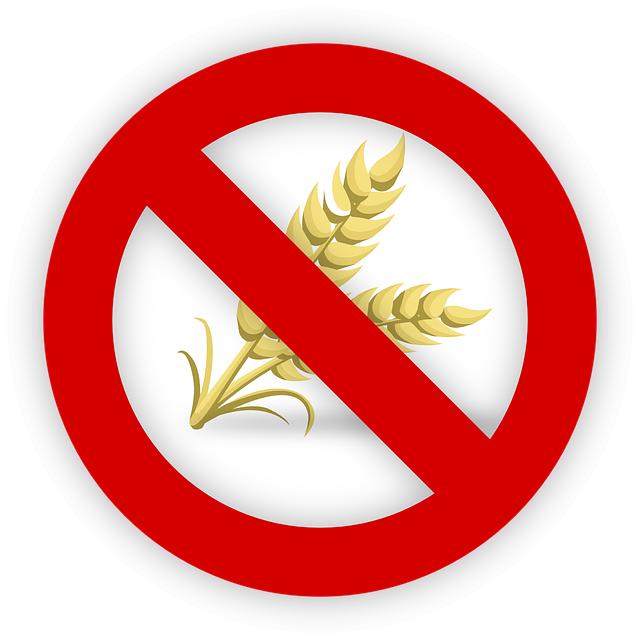Do you ever find yourself feeling bloated, fatigued, or experiencing unexplained headaches after a meal? These could be signs of more than just a simple dislike for certain foods. Food intolerances can often masquerade as everyday discomforts, making it crucial to unravel the mystery behind these symptoms. In this article, we delve into the realm of food intolerance symptoms to help you navigate your body’s unique responses to different foods. Join us on a journey of discovery as we uncover the subtle but significant signals your body may be sending you after each bite.
Table of Contents
- Common Signs of Food Intolerance
- Hidden Culprits in Your Diet
- Tips for Identifying Trigger Foods
- How to Manage Food Sensitivities
- Q&A
- Closing Remarks


Common Signs of Food Intolerance
Are you experiencing discomfort after eating certain foods? It might be a sign of food intolerance. Recognizing the common signs can help you pinpoint the culprits and make necessary dietary adjustments.
Some common symptoms of food intolerance include **bloating**, **gas**, **diarrhea**, **headaches**, **skin rashes**, and **fatigue**. These responses are the body’s way of indicating that it may not be digesting or processing certain food components effectively. By identifying these signs, you can work towards finding relief and improving your overall well-being.


Hidden Culprits in Your Diet
Do you ever feel bloated or fatigued after meals? It might not just be what you’re eating but rather what you’re intolerant to. Food intolerances can often go unnoticed but wreak havoc on your body. Some common symptoms include:
- Unexplained weight gain or loss
- Joint pain or arthritis
- Skin issues like acne or eczema
| Food Intolerance | Main Symptoms |
|---|---|
| Dairy | Bloating, cramps, diarrhea |
| Gluten | Fatigue, brain fog, joint pain |
| Sugar | Cravings, mood swings, skin issues |
If you suspect you have a food intolerance, keeping a food diary can help pinpoint the culprits. Eliminating trigger foods from your diet can lead to a significant improvement in your overall well-being. Consult a healthcare professional for proper testing and guidance on managing food intolerances to lead a healthier life.


Tips for Identifying Trigger Foods
Identifying trigger foods that can exacerbate food intolerance symptoms is a crucial step in managing your health effectively. Start by keeping a detailed food diary to track what you eat and how you feel afterward. **Notice any patterns or recurring symptoms** after consuming specific foods, which can provide valuable insights into potential trigger foods. Additionally, consider consulting with a healthcare professional or a registered dietitian for personalized guidance and support in identifying and managing your food intolerances.
Another useful tip is to gradually eliminate suspected trigger foods from your diet and observe any changes in your symptoms. Reintroduce one food at a time after a few weeks to see if it sparks any adverse reactions. Remember to be patient throughout this process, as pinpointing trigger foods may take time and experimentation. By being proactive and attentive to your body’s responses, you can gain better control over your food intolerance symptoms and make informed decisions about your diet for improved overall well-being.
| Trigger Food Group | Symptoms |
|---|---|
| Dairy | Bloating, Gas |
| Gluten | Fatigue, Brain Fog |
| Processed Foods | Headaches, Joint Pain |


How to Manage Food Sensitivities
Managing food sensitivities can be a challenging task, but with the right approach, you can effectively alleviate symptoms and improve your overall well-being. One essential step in managing food intolerances is to identify and eliminate trigger foods from your diet. By keeping a food diary and noting down any adverse reactions, you can pinpoint which foods may be causing discomfort.
Additionally, exploring alternative ingredients and cooking methods can help you still enjoy flavorful meals while avoiding problem foods. Experimenting with new recipes that focus on whole, natural ingredients can open up a world of delicious options that are gentle on your digestive system. Remember, listening to your body’s signals and making informed food choices are key components in managing food sensitivities effectively.
Q&A
Q&A: Understanding Food Intolerance Symptoms
Q: What are the common signs of food intolerance?
A: Food intolerance symptoms can vary from person to person, but common signs include bloating, stomach pain, diarrhea, and nausea after consuming certain foods.
Q: How can food intolerance be distinguished from food allergies?
A: While both involve adverse reactions to food, food intolerance typically results in digestive issues, whereas food allergies trigger an immune system response, leading to symptoms like hives, shortness of breath, or anaphylaxis.
Q: Can food intolerance symptoms appear immediately after eating?
A: Yes, food intolerance symptoms usually manifest within a few hours of consuming the triggering food, making it easier to identify the culprit through a food diary or elimination diet.
Q: Are there specific foods that commonly cause intolerance symptoms?
A: Dairy products, gluten-containing grains, certain fruits, and artificial additives are among the common culprits known to trigger food intolerance symptoms in many individuals.
Q: How can one manage food intolerance symptoms effectively?
A: Managing food intolerance involves identifying and avoiding trigger foods, consulting with a healthcare provider or dietitian for guidance, and maintaining a balanced diet to ensure adequate nutrient intake.
Q: Are there any tests available to diagnose food intolerance?
A: While there are various tests like elimination diets, food sensitivity blood tests, and hydrogen breath tests, they may not always provide definitive results, making a systematic approach of tracking symptoms essential for accurate diagnosis.
Closing Remarks
As we conclude our exploration of food intolerance symptoms, it’s crucial to listen to your body and heed its signals. By recognizing and understanding these symptoms, you empower yourself to make informed choices about your diet and overall well-being. Remember, seeking guidance from a healthcare professional can provide valuable insights and support on your journey to better health. Embrace the path to discovering what works best for your body, and may your future meals be filled with joy and vitality. Thank you for joining us on this enlightening journey!




0 Comments